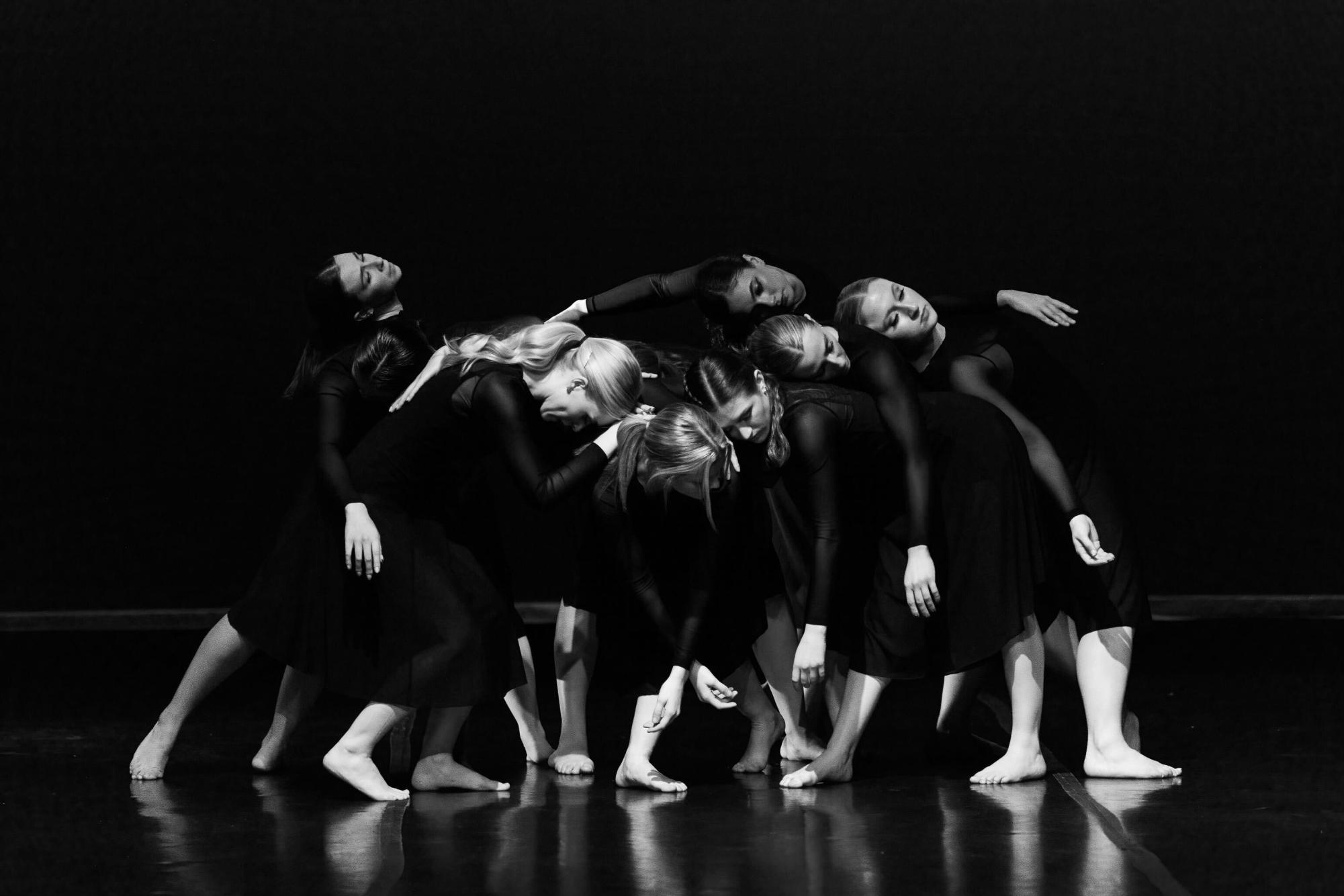Dance minor here to stay within the School of Education


Pitt students dance.
Adding a dance minor to her degree has helped Sadie Stetser learn “amazing qualities such as teamwork, dedication and persistence” throughout her time at Pitt.
“Studying dance at Pitt has taught me about different styles of dance ranging from jazz, modern and even party dance,” Stetser, a senior law criminal justice and society major, said. “I’ve learned how to put together choreography, light a show and about the different dance types across different cultures. Dance has been a hobby and passion of mine since I was little, and I did not want that to end when I came to college.”
The minor in dance is now a permanent program at Pitt after the university almost stopped offering the program three years ago. The School of Education put the program on a temporary hiatus “due to the pandemic and departure of core faculty,” according to Sally Sherman, program coordinator of the dance minor and associate professor of practice.
“We used this as an opportunity to build our instructional capacity and to make updates to improve the program,” Sherman said. “The dance minor’s improved curriculum requires fewer credits, offers greater flexibility and is now centered on a movement science approach that enhances dance-related performance, production and instructional techniques.”
The new program consists of 15 credits and requires students to take three core classes, five technique classes, a science course and an instruction class. One of the required classes is Applied Human Anatomy, but other than that, students in the dance minor have flexible options to fulfill requirements.
During Stetser’s freshman year, the dance minor was halted, but she still wanted to pursue it. Stetser is also involved with Pitt Dance Ensemble, like many students in the program.
“When I reached out to the School of Education, they encouraged me to continue taking the courses in the current curriculum, so I did that until it was brought back this year,” Stester said. “It was frustrating to check back in each year and be told it still wasn’t coming back, but the School of Education and Dr. Sherman has been great at starting it back up.”
Grace Bowman, a senior biology major, was unable to enroll in the dance minor, but still found a community with Pitt Dance Ensemble.
“The community is seriously like no other — my Pitt experience would not be the same without dance,” Bowman said. “I feel like the dancer community has really grown since my time at Pitt, and it’s so beautiful to see all the friends I make in different grades and majors than mine.”
The new and improved minor was created with a holistic approach, according to Sherman.
“It reflects our belief that the full scope of learning is intertwined with health, wellness and human development,” Sherman said. “Studying dance develops self-expression, problem solving, and creativity. Learning to teach movement helps students to build confidence not only as teachers but as public speakers. The dance minor allows us to prepare high-quality educators who work in environments outside the traditional classroom space.”
Bowman thinks that practicing dance consistently is extremely beneficial for her physical and mental health.
“Dance teaches a really important lesson about the role physical health plays in our mental health,” Bowman said. “Dance keeps me in shape, and whenever I am feeling overwhelmed a day at the studio changes my mood and makes me feel better.”
Sherman said some changes in the minor were due to the changing dance-related job market.
“While the former dance minor emphasized performance and production, the new minor also focuses on creating a well-rounded dancer who can educate movement from a science perspective and make themselves marketable for additional jobs outside of performance,” Sherman said.
Stetser’s favorite class she has taken towards the minor was dance production.
“[Dance Production] was a class that was in the old dance minor curriculum, but is not an available class anymore,” Stetser said. “The class consisted of putting together a small dance recital with consideration of choreography, lighting, staging, costuming and music. Under the new curriculum, I am taking a health fitness practicum, which is a great class.”
Sherman believes that the revamped program makes the dance minor stand out compared to other universities.
“The science-based core curriculum of this dance minor differentiates our program compared to other universities,” Sherman said. “Our minor is a unique combination of art and science that creates a well-rounded student who can powerfully take their minor in many directions. Additionally, there are no audition requirements or strict dress codes that may be intimidating to some students or act as a financial barrier for students to participate.”
Recent Posts
SGB introduces new governing code bill and addresses rumors of ICE on campus
At its weekly meeting at Nordy’s Place on Tuesday, Student Government Board introduced an omnibus…
Opinion | School should be in the summer
Although this may be controversial, I believe that from this data, it is evident that…
Weathering the storm: Pittsburgh teams have tackled some of the toughest environments
The end of the year in western Pennsylvania is always marked by two things —…
Notes From an Average Girl // Notes on Book Banning
In this edition of Notes From an Average Girl, senior staff writer Madeline Milchman writes…
To Be Honest // Yup, it is that damn phone
In this edition of To Be Honest, staff writer Evin Verbrugge writes about her phone…
Meaning at the Movies | Portraying Toxic ‘Adolescence’
In this edition of Meaning at the Movies, staff writer Lauren Deaton explores the mini-series…

